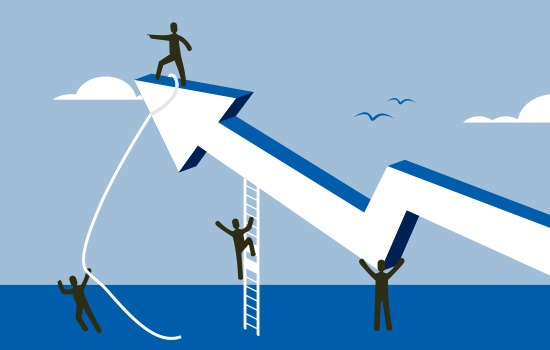
As we get closer to 2020, enterprises that fail to change are likely to be left standing while those that align their sales process and training with new client expectations and the changed sales environment are likely to be the winners.
Boutique sales consultancy Banjar Group recently prepared the white paper Sales Shift 2020 to outline and explain the nature of these changes in the B2B selling environment. They cite rapid advances in technology, growing customer expectations, global competition and the changing nature of salespeople as four of the main factors influencing this shift.
So what exactly has changed?
* Ready access to information online means that prospective clients now tend to scope their own requirements, research possibilities, and short list potential providers before making an enquiry. The old fashioned cold call is less likely to be successful in this new environment.
* Clients are no longer simply looking for a product or service – they’re looking for a ‘partner’ who can offer a solution and implement it. In this environment, a traditional salesperson who may not know much about the processes of the company he or she aims to sell to, will find it harder to make a sale. But the savvy new salesperson who understands the nature of the prospective client’s business and works towards finding a solution to their problem will find it easier to get a ‘foot in the door’.
What does this mean for the B2B enterprise?
In essence, it means we need to change the way we think about sales. In fact, according to Banjar Group, it requires “…a complete re-think of who does the selling in the organisation.”
While traditional sales skills will still be important to a degree, salespeople will need to be articulate problem solvers. A different type of training will be required. And with a much narrower sales window, organisations won’t be able to rely solely on sales departments to drive leads – they’ll need to move into a new culture where leads are generated at almost every level of the business, and the sales team is supported by knowledge from other areas.
Negotiating the new sales environment
The changes to the B2B sales environment are substantial. Our suggestions for adjusting to the changes include:
* Understand your long term strategy and look at it in the context of this changing environment.
* Familiarise yourself with the buying process of your potential customers and ensure your sales approach is aligned with this. The focus should be on identifying clients’ critical challenges and helping to solve their problems.
* Look at how you can work with your customers to create conditions that support long-term mutually sustainable success. This may sometimes mean challenging your clients to see a better way of doing things.
* Put a significant focus on understanding your prospective clients so you can offer new insights to the challenges they face – you need to demonstrate value rather than simply outlining your capacity and expertise.
* Collaboration is the key: your sales people shouldn’t be working in isolation, but hand in hand with others in your organisation who can assist them to identify, create or deliver ideas and solutions to clients and prospective clients.
It’s not about simply selling a solution. The sales shift has been from ‘solution selling’ to ‘insight selling’ to ‘business adviser selling’.
Are you ready for the future sales environment that will evolve as we approach 2020? Ask these key questions about your sales department:
* Are your recruitment strategies delivering you the high-calibre, sales-focussed, people your business really needs?
* Is your sales team helping your organisation to improve the quality of your products or services by ‘feeding back’ intelligence?
* Is the sales team working collaboratively with other areas of your business to deliver value to clients?
* Are you using out-of-date sales tools or sales training that is no longer as relevant? This may be the case if you haven’t revised your sales approach for several years.
Documenting the sales process
We believe the 2020 environment will also be characterised by organisations that have well- developed and documented sales processes, and employees who thoroughly understand both the theory and the application. For example, your process might include:
1. Define your target market
2. Develop a list of prospects
3. Research, list and acquire relevant intelligence
4. Submit offers or proposals based on defined needs
5. Qualify prospects
6. Create open prospects (meet, greet and explore opportunities)
7. Negotiate with prospects
8. Close a sale.
Salespeople of the future
The Banjar Group report suggests that the salespeople of the future will be vastly different to our current stereotypical idea of a salesperson.
They’ll be “…skilled at problem solving, research and investigation techniques, planning and forecasting…well spoken with agile minds.” They’ll be “…seen at critical industry conferences and events” and their focus will have switched from the need to reach sales targets, to genuinely working with clients to achieve results.
Businesses with the foresight to understand these changes and innovate accordingly are likely to be the most successful in the new environment.
RSM Bird Cameron prides themselves on being not just a taxation advisor, but a business partner. They work with their clients to develop all facets of business.
The Sales Shift 2020, the White Paper, is the culmination of the thoughts, beliefs and forecasts of Banjar Group.
For a free copy of the full report go to www.rsmi.com.au/reports or contact the Banjar Group by heading to their website www.banjargroup.com.au.
Please contact Andrew Sykes, Director at RSM Bird Cameron, on 02 6217 0333 or [email protected] if you would like to discuss ways to enrich your approach to sales.
